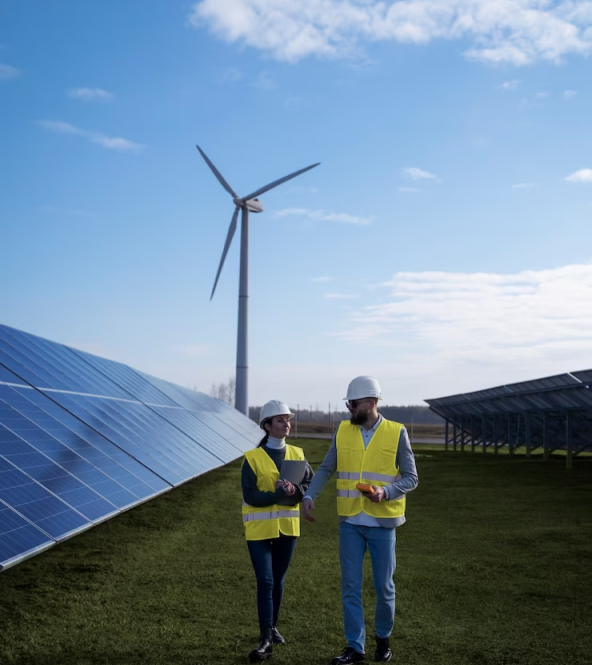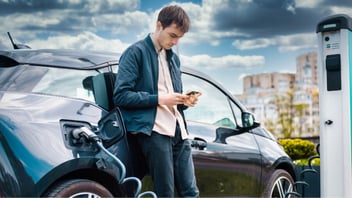Understanding EV Charger Standards: CCS, CHAdeMO, and Type 2 Connectors

Electric Vehicles are slowly becoming a part of everyone’s home. Some take it as a matter of pride and joy, while others take it as a contribution to a greener environment. But no matter the reason, you can’t keep your EV on the road without finding a suitable connector
With the growth in Electric Vehicle, it is also essential to focus on EV charging infrastructure. The electric vehicle charging connectors and plugs are one of the main elements of it. These connectors vary with every electric vehicle or country. So, do you know which one will fit your EV?
If you don’t know much about it, don’t worry. In this blog, we will explore the world of EVs and delve into the types of EV charging and the EV charger standards followed in Australia
Electric Charging: AC VS DC
Before diving into the world of electric chargers, let us first understand the type of EV charging. Usually, electric vehicles follow two charging methods: Alternative Current (AC) and Direct Current(DC).
The grid provides electric energy in AC form. But you can’t store it in the AC form, so you first need to convert it into DC form for storing in EV batteries. For AC charging in an EV, you need to use the onboard charger available with the vehicle to convert AC into DC at your home. All of this takes more time due to the conversion of energy.
On the other hand, DC Charging is speedy because the AC to DC power conversion process happens in the charging station itself.
This way, the power doesn’t need to go through the onboard charger, providing more power to your EV’s battery
EV Charger Connector
While there are different EV charges, today, we will decode three prominent EV Charging Connector Types: CCS, CHAdeMO, and Type 2 Connectors
1. Type 2 Connectors
Type 2 charging connectors are becoming the most common port for AC charging in Australia. It consists of seven pins that enable you to charge up to 32 amps by utilizing 400-volt input and offering you a maximum output of 22kW.
Mennekes or Type 2 connectors are compatible with single-phase and three-phase AC charging with Level 2 chargers. Their design consists of openings on the side that enable automatic locking of the plug in place during charging. So you won’t face the issue of the wire getting unattached from the EV in the middle of the charging.
Type 2 connector follows the typical European Standard used for EV changing. That’s why you can easily find Type 2 chargers in many new electric vehicles sold in Australia.
Electric Vehicles Compatible with Type 2 Connectors:
In Australia, EVs such as the Kia Niro PHEV, Mitsubishi Outlander PHEV, and Nissan Leaf use Type 2 Connectors.
2. CCS Connectors
In Australia, CCS2 is the most common type of charging port that most EV models have adopted. As the name suggests, a Charged Combined System(CCS) consists of dual charging ports for AC and DC chargers. Most DC chargers come with a CCS2 Connector.
Also known as CCS Combo 2, the CCS connector looks similar to the Mennekes Type 2 connector but has two more pins at the bottom for DC fast charging. So you can use AC charging at home while opting for DC fast charging at public stations. With the European-style charging plug, you can expect around 1000 volts DC and a maximum power output of 360kW.
Electric Vehicles Compatible with CCS 2 Connectors:
If you own Tesla Model 3, Model Y, Kia EV 6, Hyundai IONIQ 5, MG ZS EV, or BYD Atto 3 in Europe, you can charge your EVs at CCS Type 2 charging stations. However, Tesla X and S owners need to use adapters for that.
3. CHAdeMO
CHAdeMO is an abbreviation for the French word ‘Charge de Move’, meaning move using charge. Developed in Japan, the CHAdeMO connector offers DC charging. That’s why you can find them usually in the Japanese-built EVs and PHEVs.
CHAdeMO connector enabled fast DC charging with the capability of bi-directional charging. It means it not only takes energy from the grid to charge your EV battery, but you can also send its power back to the grid or power your home. This way, it acts like a giant home battery.
With the CHAdeMO plug, you can charge up to 400kW. Also, EVs that use the CHAdeMO port feature a separate Type 2 AC port for charging at home.
Electric Vehicles Compatible with CHAdeMO Connectors:
Most Japanese-built EVs and PHEVs have this EV charging technology, such as Mitsubishi Eclipse Cross PHEVs, Nissan Leaf, and Lexus UX 300e.
What are the types of Charging setups available in Australia?
If you want to charge your electric vehicle, there are two main ways to do that.
1. Home Charging Stations
One of the best parts about getting an EV is the ease of charging it at your home overnight. You only need to install single-phase or three-phase home wall box chargers according to your requirements. While a single phase can add around 7kW output, the three-phase chargers add around 22 kW output.
However, this setup only supports electric vehicle charging connectors for AC charging.
2. Public Charging Stations
EV public charging stations perform a similar task as gas stations. Just like you stop at the gas station to refill the vehicle’s tank in minutes, these public charging stations also enable you to stay on the road by plugging your EV into public chargers.
They use DC chargers that perform faster than your home charging setup. You can expect 50kW to 350kW of output from it.
Apart from following the fast charging standards, public chargers also have the feature of accepting information
So when you plug in your EV in one of these chargers, your vehicle’s car management system will interact and tell the charger about its electricity requirements, known as charge acceptance rate.
Conclusion
Getting an appropriate connector for your E is as important as getting the ideal fit charger for your smartphone. Without one, you can’t keep your EV on the road. Since there are so many EV charging port types, it’s become necessary to properly research before getting your EV.
We hope all the points discussed above have cleared your doubts and given you a clear understanding of the crucial electric vehicle charging solutions.




